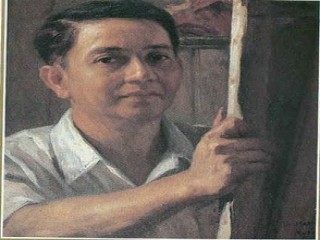
Fernando Amorsolo biography
Date of birth : 1892-05-30
Date of death : 1972-04-24
Birthplace : Paco, Manila, Spanish East Indies (now Philippines)
Nationality : Spanish
Category : Arts and Entertainment
Last modified : 2011-05-01
Credited as : Artist painter, rural landscapes,
The Philippine artist Fernando Amorsolo was a portraitist and painter of rural landscapes. He is best known for his craftsmanship and mastery in the use of light.
Fernando Amorsolo was born May 30, 1892, in the Paco district of Manila. At 13 he was apprenticed to the noted Philippine artist Fabian de la Rosa, his mother's first cousin. In 1909 Amorsolo enrolled at the Liceo de Manila and then attended the fine-arts school at the University of the Philippines, graduating in 1914. After working three years as a commercial artist and part-time instructor at the university, he studied at the Escuela de San Fernando in Madrid. For seven months he sketched at the museums and on the streets of Madrid, experimenting with the use of light and color. That winter he went to New York and discovered the works of the postwar impressionists and cubists, who became the major influence on his works. On his return to Manila, he set up his own studio.
During this period, Amorsolo developed the use of light—actually, backlight—which is his greatest contribution to Philippine painting. Characteristically, an Amorsolo painting contains a glow against which the figures are outlined, and at one point of the canvas there is generally a burst of light that highlights the smallest detail.
During the 1920s and 1930s Amorsolo's output of paintings was prodigious. In 1939 his oil Afternoon Meal of the Workers won first prize at the New York World's Fair. During World War II Amorsolo continued to paint. The Philippine collector Don Alfonso Ongpin commissioned him to execute a portrait in absentia of Gen. Douglas MacArthur, which he did at great personal risk. He also painted Japanese occupation soldiers and self-portraits. His wartime paintings were exhibited at the Malacanang presidential palace in 1948. After the war Amorsolo served as director of the college of fine arts of the University of the Philippines, retiring in 1950. Married twice, he had 13 children, five of whom became painters.
Amorsolo was noted for his portraits. He made oils of all the Philippine presidents, including the revolutionary leader Gen. Emilio Aguinaldo, and other noted Philippine figures. He also painted many wartime scenes, including Bataan, Corner of Hell, and One Casualty.
Amorsolo, who died in 1972, is said to have painted more than 10,000 pieces. He continued to paint even in his late 70s, despite arthritis in his hands. Even his late works feature the classic Amorsolo tropical sunlight. He said he hated "sad and gloomy" paintings, and he executed only one painting in which rain appears.
Amorsolo is mentioned in Galo B. Ocampo, The Religious Element in Philippine Art (1965), and in National Museum, Philippines, Aspects of Philippine Culture (1967).



















